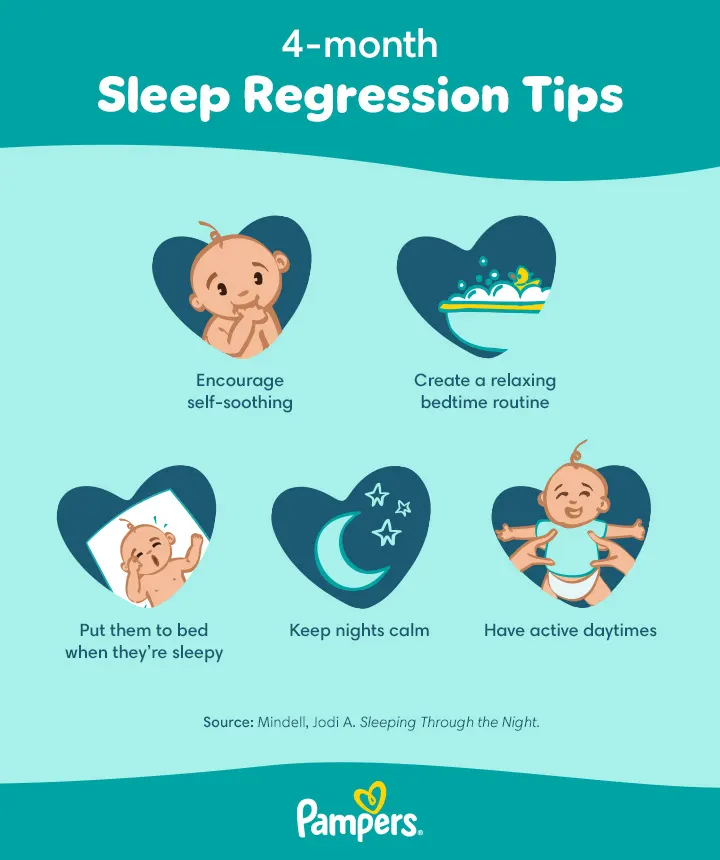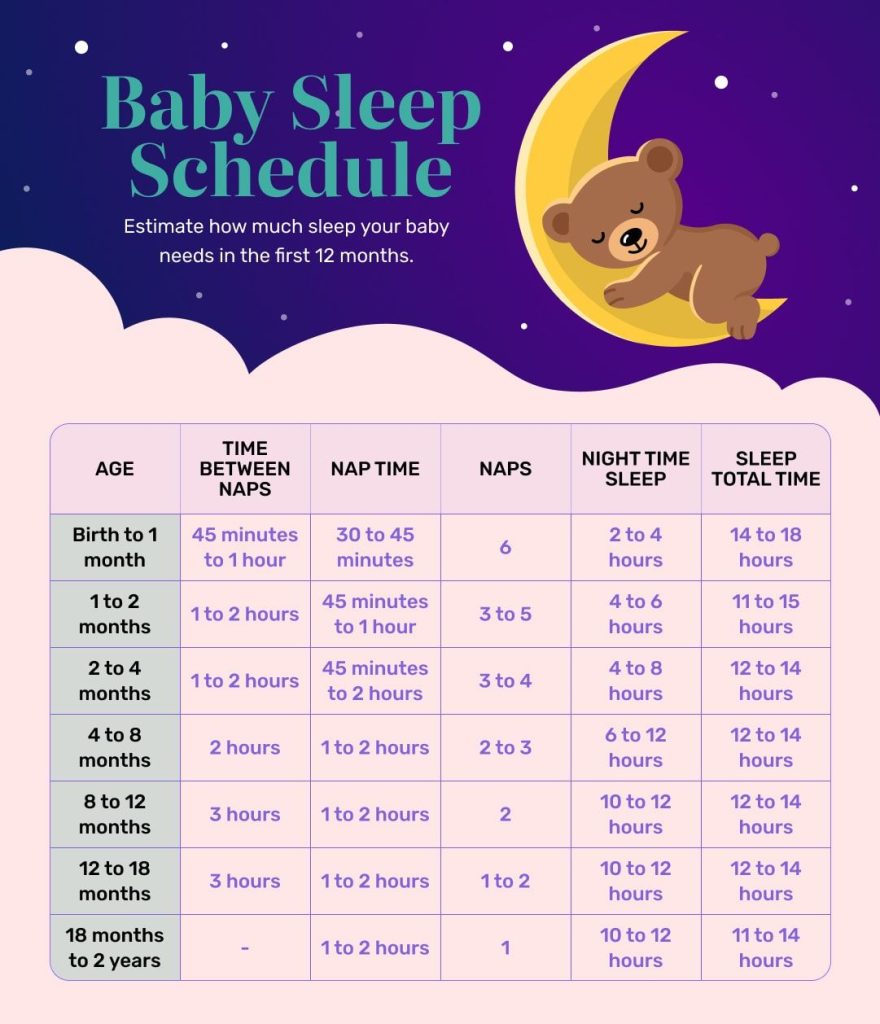To establish a baby bedtime routine, create a consistent schedule and follow calming activities before bed. This helps your baby recognize sleep cues and feel secure.
Establishing a baby bedtime routine is crucial for both the baby and parents. Consistency in sleep patterns promotes better rest and development. Start with a warm bath to relax your baby, followed by quiet activities like reading a story or gentle rocking.
Dimming the lights and playing soft lullabies can signal bedtime. Stick to the same steps every night to create predictability. This routine not only helps your baby fall asleep faster but also fosters healthy sleep habits as they grow. A structured bedtime routine can transform bedtime into a peaceful, stress-free experience for the entire family.
Importance Of Bedtime Routines
Establishing a consistent bedtime routine is vital for both babies and parents. A structured routine helps babies feel secure and promotes healthy sleep habits. For parents, a bedtime routine offers a chance to bond with their baby and ensures a restful night.
Benefits For Babies
- Better Sleep Quality: Babies sleep more soundly with a set routine.
- Emotional Security: Predictable routines make babies feel safe.
- Improved Development: Consistent sleep helps brain development.
Impact On Parents
Parents benefit greatly from having a bedtime routine. It offers them more time to relax and unwind.
- Less Stress: Knowing what to expect reduces parental stress.
- More Free Time: Consistent bedtimes allow parents personal time.
- Stronger Bond: Bedtime routines strengthen the parent-child relationship.

Credit: www.pregnancybirthbaby.org.au
Setting The Stage
Creating a baby bedtime routine involves setting the stage. This ensures a smooth transition to sleep. Let’s explore ways to make this happen.
Creating A Calm Environment
A calm environment helps your baby feel secure. Dim the lights to signal bedtime. Keep noise levels low to prevent disturbances. Use a white noise machine to drown out sudden sounds. Soft music can also soothe your baby. Choose calming scents like lavender in a diffuser.
Ensure the room temperature is comfortable. Overheating or being too cold can disrupt sleep. A consistent environment helps your baby know it’s bedtime.
Choosing The Right Time
Selecting the right bedtime is crucial. Babies thrive on consistency. Choose a time that suits your baby’s natural sleep patterns. Track their sleep cues to identify the best bedtime. These can include yawning, rubbing eyes, or crankiness.
Stick to this time every night. A consistent schedule helps regulate their internal clock. Gradually adjust the bedtime if needed. Small changes are easier for babies to adapt to.
Consistent Bedtime Activities
Creating a bedtime routine for your baby helps them sleep better. Consistency is key. Regular activities signal to your baby that it’s time to sleep. Below are some activities to include in your routine.
Bath Time
A warm bath can be very soothing. It helps your baby relax before bed. Use gentle, baby-friendly soap. Keep the water warm but not too hot.
- Prepare the bath with the right temperature.
- Use calming scents like lavender.
- Make bath time fun with toys.
Story Time
Reading a story calms your baby and helps them settle. Choose books with simple, soothing language. Avoid stories that are too exciting.
- Select a quiet spot for reading.
- Choose books with soft illustrations.
- Use a calm, gentle voice when reading.
| Activity | Benefits |
|---|---|
| Bath Time | Relaxes and soothes the baby. |
| Story Time | Calms the baby and aids sleep. |

Credit: www.thebump.com
Feeding Before Bed
Feeding your baby before bed is a crucial part of establishing a bedtime routine. It helps ensure they are full and comfortable, reducing the chances of waking up during the night due to hunger. Let’s explore the best practices for feeding your baby before bed.
Optimal Timing
Timing is everything when it comes to feeding your baby before bed. The ideal time to feed your baby is 30 to 45 minutes before bedtime. This allows enough time for digestion and helps avoid any discomfort.
If your baby goes to bed at 8 PM, aim to start feeding at 7:15 PM. This timing helps create a consistent routine, making it easier for your baby to recognize bedtime signals.
Types Of Foods
The type of food your baby consumes before bed plays a significant role in their sleep quality. Choose foods that are easy to digest and provide lasting nourishment.
| Age Group | Recommended Foods |
|---|---|
| 0-6 Months | Breast milk or formula |
| 6-12 Months | Pureed fruits, vegetables, and cereals |
| 12 Months and Older | Small pieces of soft fruits, yogurt, and cereals |
Stick to foods your baby is already familiar with to avoid any allergic reactions or digestive issues.
Here are some feeding tips to consider:
- Avoid sugary foods that can spike energy levels.
- Offer a small snack if your baby seems extra hungry.
- Ensure the food is at a comfortable temperature.
By focusing on optimal timing and the right types of foods, you can create a soothing bedtime routine for your baby. This helps them feel secure and ready for a good night’s sleep.
Soothing Techniques
Establishing a baby bedtime routine can be challenging. Soothing techniques play a crucial role in helping your baby relax and fall asleep. Here are some effective methods to create a peaceful bedtime environment.
Lullabies And Soft Music
Lullabies are a wonderful way to calm your baby. Singing to your baby can create a strong emotional bond. Soft music can also help soothe your baby. Choose gentle melodies to create a peaceful atmosphere. Avoid loud or fast-paced tunes. Use a white noise machine to mask household sounds.
You can use a music player with a playlist of soft songs. Ensure the volume is low and calming. Some parents prefer classical music or nature sounds. Experiment to see what your baby prefers. Consistency is key, so play the same songs every night.
Gentle Rocking
Gentle rocking can mimic the motion your baby felt in the womb. This can be very comforting. Use a rocking chair or cradle to help your baby relax. Hold your baby close and gently rock back and forth.
Always support your baby’s head and neck while rocking. You can also use a baby swing with gentle settings. Ensure the swing is safe and secure. Never leave your baby unattended in a swing. Another option is to gently sway while holding your baby in your arms.
Combine rocking with soft music for added soothing effects. This can create a multi-sensory calming experience. Consistent gentle rocking can signal to your baby that it’s time to sleep.
Dealing With Resistance
Establishing a baby bedtime routine can be challenging. Babies often resist new routines. Understanding and handling this resistance is crucial. This section will guide you on how to deal with such resistance effectively.
Handling Protests
Babies often protest bedtime changes. They cry, fuss, or refuse to sleep. Stay calm and consistent. Stick to the routine you set. This teaches your baby what to expect.
- Stay Patient: Patience is key. Babies sense stress. Stay calm and soothing.
- Consistent Routine: Consistency helps. Follow the same steps each night.
- Comfort Items: Use comfort items like a blanket or toy. These can help your baby feel secure.
Gradual Adjustments
Sudden changes can upset your baby. Gradual adjustments work better. Make small changes over time.
- Adjust Bedtime: Move bedtime earlier by 10-15 minutes each night. This helps your baby adjust slowly.
- Introduce New Steps: Add new steps to the routine gradually. This makes the process smoother.
- Monitor Reactions: Watch how your baby reacts. Adjust the routine if needed.
Consistency and patience are key. Gradual adjustments help minimize resistance. Establishing a bedtime routine takes time. With persistence, your baby will adapt.
Monitoring Sleep Patterns
Monitoring sleep patterns is essential to establish a successful baby bedtime routine. By understanding and tracking your baby’s sleep habits, you can create a more effective schedule. Below are key strategies to monitor your baby’s sleep patterns.
Tracking Progress
Tracking your baby’s sleep progress helps you understand their needs better. Use a sleep diary or an app to record sleep times, durations, and awakenings.
- Record the time your baby falls asleep.
- Note the duration of each sleep period.
- Track awakenings during the night.
Consistently tracking these details reveals patterns. This helps in adjusting the bedtime routine accordingly. A table can make tracking more organized:
| Date | Sleep Time | Duration | Awakenings |
|---|---|---|---|
| 01/01/2023 | 8:00 PM | 10 hours | 2 times |
| 01/02/2023 | 7:30 PM | 9 hours | 1 time |
Identifying Issues
Identifying sleep issues early can prevent long-term problems. Look for patterns in the data collected. Common issues include frequent night awakenings or short naps.
- Frequent awakenings: Check for discomfort or hunger.
- Short naps: Ensure the nap environment is conducive.
- Difficulty falling asleep: Establish a calming bedtime routine.
Addressing these issues promptly helps in maintaining a consistent sleep schedule. Use the information collected to make necessary adjustments. This ensures your baby gets the rest they need.

Credit: www.whattoexpect.com
Adapting As They Grow
Establishing a baby bedtime routine early on is crucial. As your baby grows, their needs change. Adapting the bedtime routine ensures they get enough sleep.
Adjusting The Routine
As babies grow, their sleep patterns change. Adjusting the routine is necessary to meet their evolving needs. Here are some tips to help:
- Observe your baby’s sleep cues.
- Gradually shift bedtime earlier or later.
- Include calming activities like a warm bath.
- Maintain consistency with bedtime rituals.
A consistent bedtime routine helps your baby feel secure. This, in turn, promotes better sleep.
Transitioning To A Toddler Bed
Transitioning from a crib to a toddler bed is a significant change. To make this transition smooth, follow these steps:
- Introduce the toddler bed during playtime.
- Allow your child to explore the new bed.
- Keep bedtime routines consistent during the transition.
- Encourage your toddler to sleep in their new bed.
Creating a sense of ownership helps your toddler embrace the change. A familiar bedtime routine eases the transition.
| Age | Bedtime | Sleep Hours |
|---|---|---|
| 0-3 months | 9:00 PM | 14-17 hours |
| 4-11 months | 7:00 PM | 12-15 hours |
| 1-2 years | 7:30 PM | 11-14 hours |
| 3-5 years | 8:00 PM | 10-13 hours |
Regularly evaluate and adapt the bedtime routine to ensure your child gets sufficient sleep. This promotes healthy growth and development.
Frequently Asked Questions
When Should You Establish A Bedtime Routine For A Baby?
Start a bedtime routine for your baby around 6 to 8 weeks old. Consistent routines help babies sleep better.
How To Create A Night Time Routine For Baby?
Establish a consistent bedtime. Use a calming bath, soft lighting, and gentle lullabies. Read a short story. Avoid screens before bed.
At What Age Do Babies Get Into A Sleep Routine?
Babies typically get into a sleep routine around 3 to 6 months of age. Consistent bedtime habits help.
How Do I Work Out My Baby’s Bedtime?
Establish a consistent bedtime routine. Observe your baby’s natural sleep patterns. Aim for a bedtime between 6:30 pm and 8:00 pm. Adjust based on your baby’s needs.
What Is A Baby Bedtime Routine?
A bedtime routine involves consistent activities like bathing, reading, and soothing to help your baby sleep better.
Conclusion
Creating a baby bedtime routine can transform your evenings. Consistency is key for success. Follow the steps outlined for peaceful nights. Enjoy this special bonding time with your little one. A well-established routine benefits both baby and parents, leading to better sleep and happier days.
Sweet dreams await!


